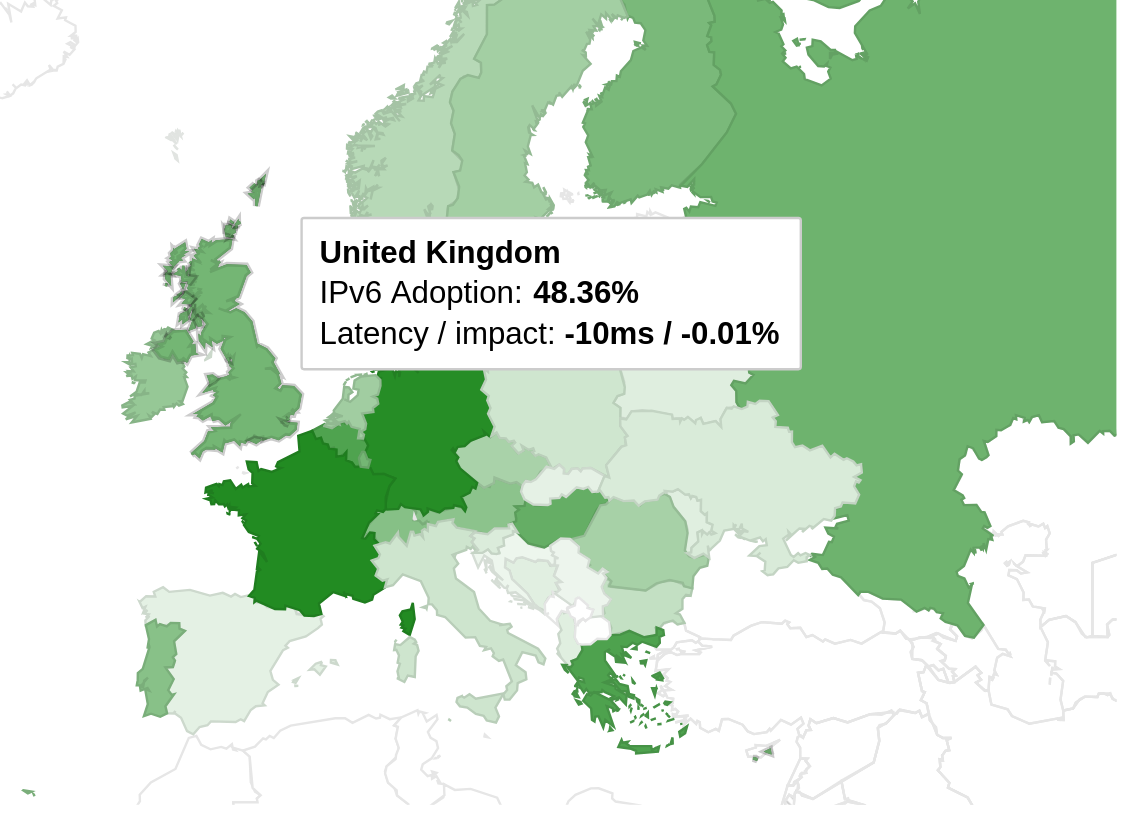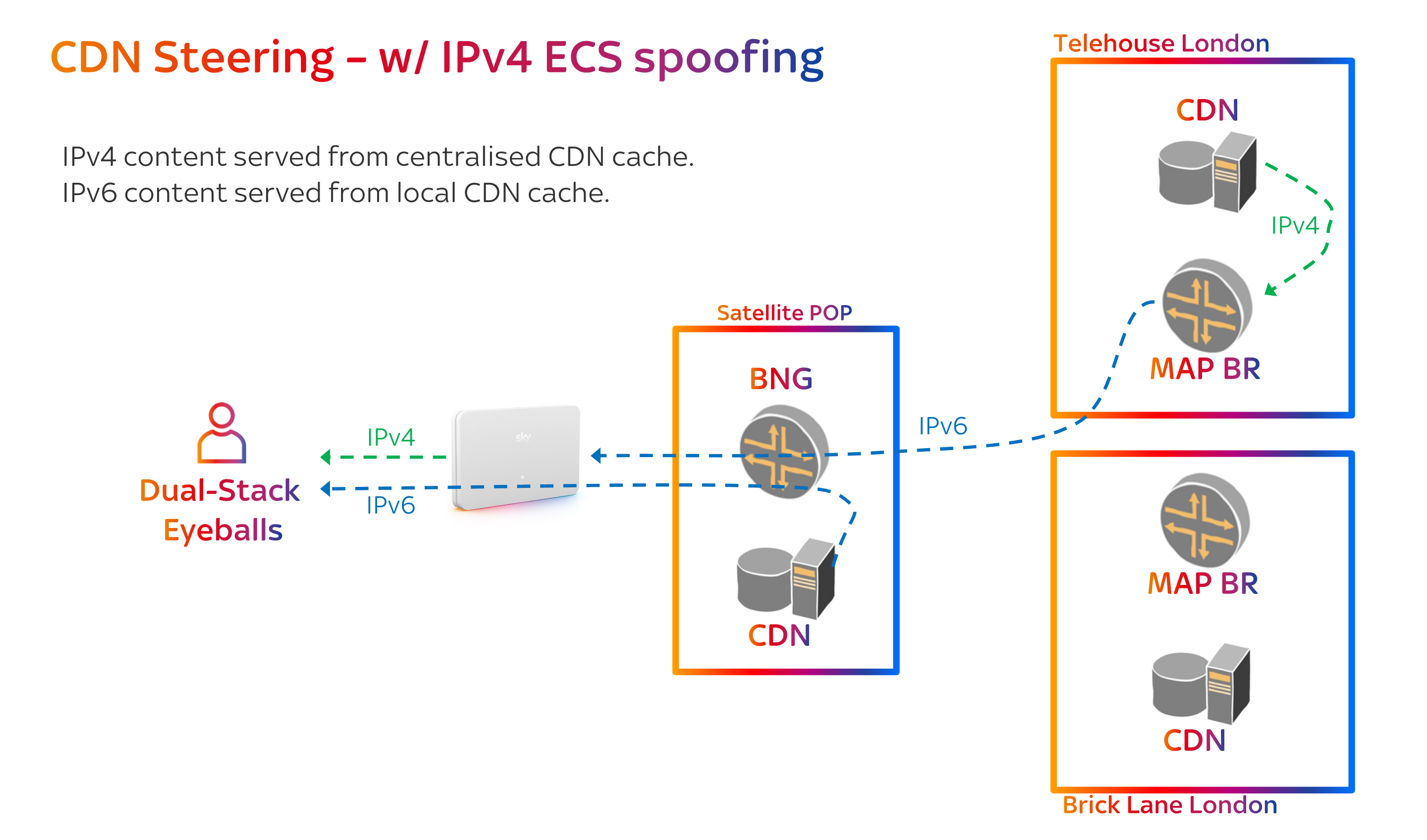IPv6 Networking in the UK

48% of the UK has IPv6 and it’s 10ms faster (credit Google).
We recently went to the UK IPv6 Council annual meeting, ten years since the first one. In the intervening time, IPv6 usage in the UK has grown from 0.2% of connections to 48% today; almost half the country is IPv6-enabled. There was lots of interesting material about IPv6-only and “IPv6 mostly” networks, in addition to dual-stack networks.
IPv6 Mostly
“IPv6 mostly” networks are dual stack networks that provide NAT64 and DNS64 servers. DNS64 provides synthesised IPv6 addresses for IPv4-only resources, and the NAT64 service then provides translation between the two. Some software is incompatible because it tries to talk directly to IPv4 addresses which can’t be reached. Modern computers and phones offer CLAT which bridges this gap. A network client using CLAT in a network that offers NAT64 and DNS64 no longer needs to be dual stack and can turn direct IPv4 off.
DHCP has a new option: Option 108: ‘IPv6-Only preferred’. About 75% of clients – mostly phones, tablets and OSX devices – will specify this option. When present on both server and client, the client won’t request an IPv4 address from the DHCP server, and will operate only with IPv6 addresses. Imperial College London have rolled this out on their wifi network. Of the 71,000 devices using their network, only 16,000 request an IPv4 address. 77% are IPv6-only.
IPv4 as a service
Sky rolled out a network in Italy which is internally IPv6-only, and IPv4 traffic is layered on top using MAP-T. This means the broadband box translates all IPv4 traffic into IPv6 as it enters the network, then a MAP box turns it back into IPv4 as it leaves the Sky network to get to the origin. IPv6 traffic skips both transitions. As a large eyeball network, they have network cache devices in their network. If the traffic flow is IPv4, it is terminated on the cache box in one of the four points key points-of-presence. IPv6 flows can terminate on cache boxes anywhere in the network – crucially closer and faster to the end user.

Multiple providers report lower IPv6 latency than IPv4, in Sky’s network IPv6 can have a shorter and faster path. Sky IPv6 council slides
Other updates
Vodafone started and has nearly finished dual-stacking their network. The motivation was to reduce the IPv4 and carrier grade NAT costs. Today 75% of their customers have IPv6 and 38% of their traffic flows over IPv6. Microsoft talked about all their work on the operating system side to support and proxy IPv6, with the consensus being very clear that CLAT and DHCP option 108 was the most important thing they should have delivered last year.